Reagan: The Life
Drawing heavily on the former president's diaries and a raft of memoirs by insiders, author H.W. Brands' "Reagan: The Life" tells its story briskly, punctuated by doses of well-tempered historical context, occasional and always gentle corrections of Reagan’s flawed representations, and a dash of analysis.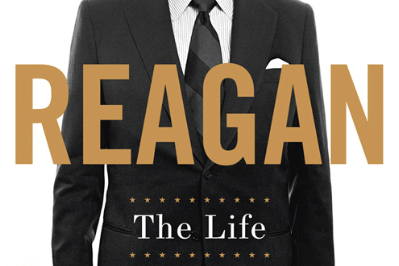

Knopf Doubleday
|
To see long excerpts from “Reagan” at Google Books, click here. |
“Reagan: The Life” A book by H.W. Brands
H.W. Brands’ new biography of Ronald Reagan, “Reagan: The Life,” jumps out with a quick start and never looks back. Rather than justify another version of Reagan’s life story, Brands opens with his speech at the 1964 GOP convention. It’s a savvy choice not only because of that moment’s theatricality, but also because it was Reagan’s tipping point. Before he stepped up to that podium, who suspected Reagan would become the most important American politician in the second half of the 20th century?
Drawing heavily on Reagan’s diaries and a raft of memoirs by insiders, Brands tells his story briskly in short, polished chapters. He marches through Reagan’s Midwestern boyhood, the radio work, Cold War Hollywood and the barnstorming years for General Electric. Even after Reagan becomes a national political figure, Brands rarely slackens the pace. (One exception is Reagan’s meeting with Mikhail Gorbachev in Iceland, to which Brands devotes 30 pages, split into five chapters.) Along the way, he adds doses of well-tempered historical context, occasional and always gentle corrections of Reagan’s flawed representations, and a dash of analysis — often a comparison to Franklin Delano Roosevelt, Reagan’s boyhood hero and the subject of an earlier Brands biography.
The resulting portrait of Reagan — sympathetic but never softheaded — resembles the one offered by veteran journalist Lou Cannon, whom Brands credits in his note on sources. Published more than a decade ago, Cannon’s key works reflect his many years of covering Reagan in Sacramento and Washington. Those books are indeed admirable, and it’s refreshing to see an accomplished historian acknowledge an equally accomplished journalist and author. But we know more now than we did a decade ago — not only about Reagan, but also about the Age of Reagan, which Princeton historian Sean Wilentz dates from 1974 to 2008. One hopes that these new insights will continue to inflect our understanding of Reagan, his remarkable career, and his legacy.
Such biographies require difficult decisions about selection and emphasis. Even so, I found several omissions striking. One is the pass Brands effectively gives to Reagan on fair housing, which Reagan opposed on the campaign trail in 1966. Reagan framed his opposition as a reverence for property rights, and Brands takes him at his word. But in the 1980s, his administration also tried to secure tax exemptions for Bob Jones University, whose racial policies disqualified it under IRS rules. Like Reagan’s stance on Vietnam — he claimed in 1965 that “we could pave the whole country and put parking stripes on it and still be home by Christmas” — his record on civil rights hasn’t aged well.
Consider, too, Brands’ description of Reagan’s first significant act as governor. We now know that Clark Kerr’s ouster as University of California president was carefully orchestrated. CIA director John McCone, who was also a university regent, was involved with the planning, as was FBI director J. Edgar Hoover, whom Reagan had courted since his Hollywood days. As a candidate, Reagan excoriated Kerr for his handling of student activism on the Berkeley campus. Shortly after the election, a regent acting on Reagan’s behalf asked Kerr to resign; instead, Kerr attempted to meet with Reagan, who rebuffed him twice. The state’s major newspapers predicted Kerr’s firing a month before the UC Regents made it official in February 1967. Yet Brands’ only comment on Kerr’s unceremonious removal was that it surprised Reagan as well as Kerr.
Seth Rosenfeld’s exhaustively researched 2012 book “Subversives,” which required three decades of lawsuits to secure the relevant FBI documents, reveals that Hoover aided Reagan during the 1966 campaign, in part because he loathed Kerr. (Hoover also scuttled Kerr’s chance to join LBJ’s cabinet by passing along intelligence he knew to be false to the White House.) Although Reagan’s secret alliance with Hoover directly assisted his rise to power, Brands mentions the FBI director only twice in passing.
Brands is similarly silent about Reagan’s debt to his Hollywood agent, Lew Wasserman, who receives only one brief mention. As president of the Screen Actors Guild, Reagan helped Wasserman’s company land an antitrust waiver that gave it an important advantage over its competitors. A decade later, when the Justice Department launched an antitrust probe, Reagan testified before a grand jury amid charges of predatory business practices. Chicago mob lawyer Sidney Korshak was Wasserman’s best friend of five decades; his client controlled IATSE, the Hollywood stagehand union that Reagan supported in a jurisdictional conflict with its more militant rival after the war. Brands provides useful detail on that bitter contest and Reagan’s role in it, but he omits the mob connection, which surfaced in the late 1930s. Perhaps if Wasserman and Korshak had published their memoirs, Brands would have included them in his portrait. But Wasserman prided himself on keeping almost no written records, and Korshak never even kept an office.Although Brands passes over Reagan’s links to Hoover and Wasserman, he shows how Reagan took pains to please his other benefactors. One was General Electric, whose largest customer was the federal government. While honing his GE stump speech about the evils of big government, Reagan inveighed against the Tennessee Valley Authority until he learned it was an important GE client. “Suddenly, realization dawned,” Reagan recalled. “How free was I to embarrass or hurt the company, just because I had carte blanche to speak my mind?” He asked GE boss Ralph Cordiner what he would say if the speech could be made just as effectively without mentioning TVA. “Well,” Cordiner replied, “it would make my job a lot easier.” Dropping TVA from his speech was no problem, Reagan wrote later. “The whole attempt only served to illustrate how late it is if we are to preserve freedom.” Brands lets that mysterious conclusion stand without comment.
Yet another omission is Reagan’s war on drugs, which he announced three weeks before the 1982 midterm election. “Drugs are bad, and we’re going after them,” he told his radio audience. “As I’ve said before, we’ve taken down the surrender flag and run up the battle flag. And we’re going to win the war on drugs.” More than three decades later, that pledge sounds faintly ridiculous. One of that war’s original architects, John Ehrlichman, later admitted that it was meant to target young people and blacks, who were unlikely to vote for Republicans. Any victories Reagan might have claimed in his drug war were tempered by the Kerry Committee report of 1986, which found that the Reagan administration paid known drug traffickers in an effort to fund the contras in Nicaragua.
At no point does Brands mention the savings-and-loan scandal that began during Reagan’s second term. That scandal, which cost American taxpayers some $160 billion, flowed directly from Reagan’s emphasis on deregulation. Nor does he ask whether Reagan bears any responsibility for decades of stagnant wages and massive concentrations of wealth. Many notable economists have addressed this point directly. The program Reagan championed, Nobel Prize winner Joseph Stiglitz claimed in 2008, was “never supported by economic theory. Nor, it should now be clear, is it supported by historical experience.”
To his credit, Reagan established a bipartisan commission to fix Social Security, by far the most effective antipoverty program in American history. Earlier in his career, Reagan had opposed the program on principle, but he quoted FDR when he signed the commission’s recommendations into law in 1983. Brands sees this as an example of Reagan’s pragmatism and flexibility. But Brands also draws heavily on Office of Management and Budget director David Stockman’s memoir, which shows how Reagan, who ran as a budget hawk, managed to double the federal deficit. “He promised Americans the gift of tax cuts, which he delivered without insisting on conservatism’s traditional precondition, spending cuts,” Brands writes.
Oddly, this judgment arrives immediately after Brands compares Reagan favorably with FDR. “In Reagan’s case,” he writes, “of the two goals he set for himself — shrinking government and defeating communism — he accomplished half of the first and all of the second.” But his comparison to Roosevelt, though nifty in its symmetry, misses important differences between the two presidents’ challenges, achievements and legacies, especially as they have affected the daily lives of ordinary Americans.
Perhaps the most abiding aspect of Reagan’s legacy derives from his first inaugural address. “In this present crisis,” he said, “the government is not the solution to our problem; government is the problem.” Whatever descriptive power this claim had in 1981, it eventually became a self-fulfilling prophecy, especially during George W. Bush’s presidency. Cannon has argued that Bush’s legacy must be distinguished from Reagan’s, but tea party proponents continue to sabotage the federal government in Reagan’s name. If we set that anti-government legacy alongside FDR’s, Brands’ comparison tilts heavily toward Reagan’s boyhood hero.
Independent journalism is under threat and overshadowed by heavily funded mainstream media.
You can help level the playing field. Become a member.
Your tax-deductible contribution keeps us digging beneath the headlines to give you thought-provoking, investigative reporting and analysis that unearths what's really happening- without compromise.
Give today to support our courageous, independent journalists.
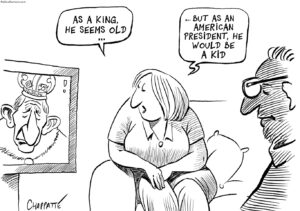

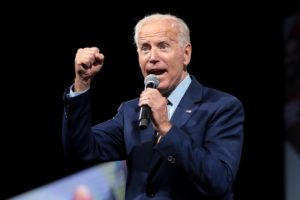
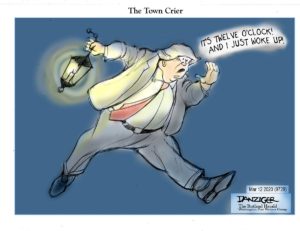
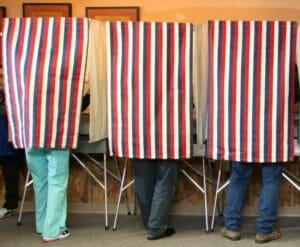
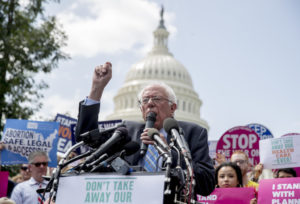
You need to be a supporter to comment.
There are currently no responses to this article.
Be the first to respond.